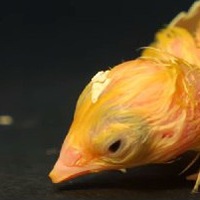
С помощью какого процесса образуются семена?
 0
0
 0
0
Ответы на вопрос
 Внимание! Ответы на вопросы дают живые люди. Они могут содержать ошибочную информацию, заблуждения, а также ответы могут быть сгенерированы нейросетями. Будьте внимательны. Если вы уверены, что ответ неверный, нажмите кнопку "Пожаловаться" под ответом.
Внимание! Ответы на вопросы дают живые люди. Они могут содержать ошибочную информацию, заблуждения, а также ответы могут быть сгенерированы нейросетями. Будьте внимательны. Если вы уверены, что ответ неверный, нажмите кнопку "Пожаловаться" под ответом.

Ответ:
от осадков других растений
Объяснение:
 0
0
 0
0

Ответ:
ПРОРАСТАНИЯ СЕМЯН ЭТО ПРОЦЕСС
 0
0
 0
0

Formation of Seeds
The formation of seeds is a complex process that occurs in plants as part of their reproductive cycle. Seeds are the structures that contain the embryo of a plant, along with a food source and a protective covering. The process of seed formation involves several stages, including pollination, fertilization, and maturation.
Pollination: Pollination is the transfer of pollen from the male reproductive organ (stamen) to the female reproductive organ (pistil) of a flower. This can occur through various mechanisms, including wind, water, or the activities of pollinators such as bees, butterflies, or birds. Pollination is essential for the transfer of male gametes (sperm cells) to the female gametes (egg cells) within the flower.
Fertilization: Fertilization is the fusion of the male and female gametes, resulting in the formation of a zygote. After pollination, the pollen grain germinates on the stigma of the pistil, forming a pollen tube that grows down through the style and reaches the ovary. The sperm cells then travel through the pollen tube and fertilize the egg cells located in the ovules within the ovary. This process leads to the formation of a zygote, which will develop into an embryo.
Maturation: After fertilization, the ovules develop into seeds through a process called maturation. The zygote divides and differentiates, forming an embryo with a root, stem, and one or two cotyledons (seed leaves). The ovule also undergoes changes, such as the development of a seed coat or protective covering. Additionally, the endosperm, which is a nutrient-rich tissue, may also develop around the embryo to provide nourishment during germination.
Once the seeds have completed their maturation process, they are ready for dispersal. Dispersal mechanisms can vary depending on the plant species and can include wind, water, animals, or self-dispersal mechanisms.
It is important to note that the process of seed formation can vary among different plant species. The information provided here is a general overview of the process, and specific details may differ depending on the plant species in question.
 0
0
 0
0
Похожие вопросы









Топ вопросов за вчера в категории Биология
Последние заданные вопросы в категории Биология
-
Математика
-
Литература
-
Алгебра
-
Русский язык
-
Геометрия
-
Английский язык
-
Химия
-
Физика
-
Биология
-
Другие предметы
-
История
-
Обществознание
-
Окружающий мир
-
География
-
Українська мова
-
Информатика
-
Українська література
-
Қазақ тiлi
-
Экономика
-
Музыка
-
Право
-
Беларуская мова
-
Французский язык
-
Немецкий язык
-
МХК
-
ОБЖ
-
Психология
-
Физкультура и спорт
-
Астрономия
-
Кыргыз тили
-
Оʻzbek tili





















